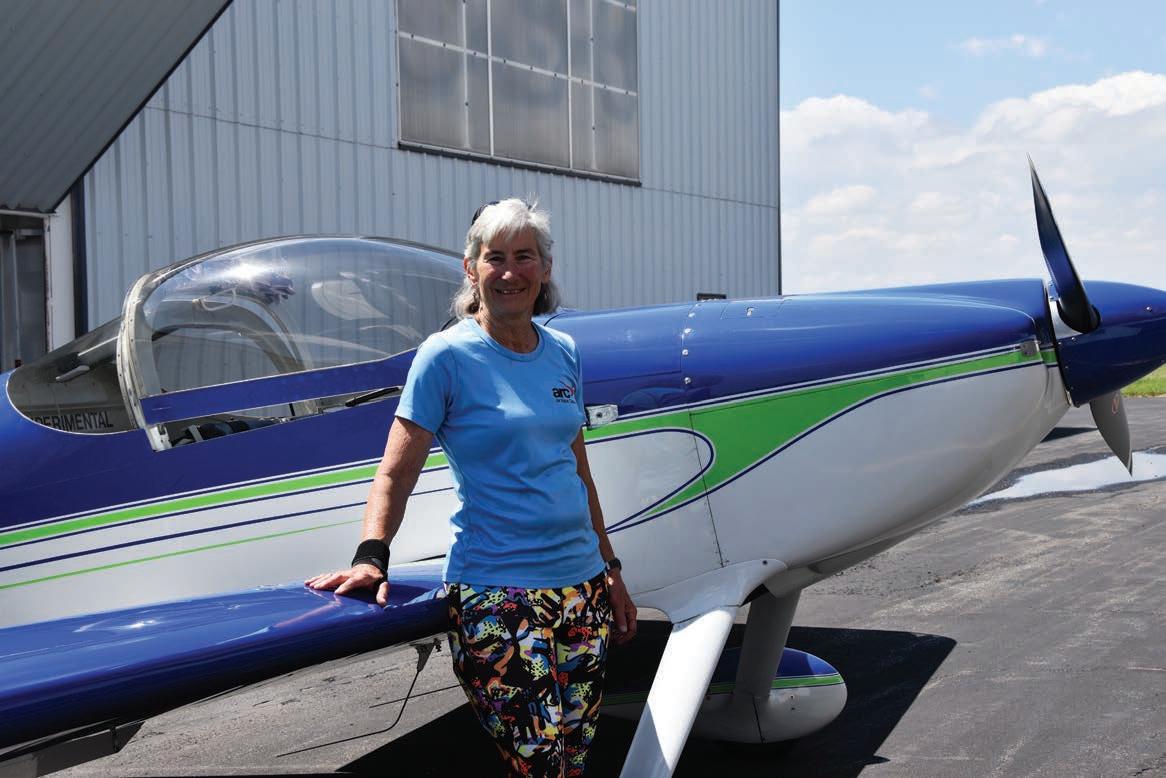
3 minute read
LEGAL
Portugal and spend more time in Europe,” Miller said. “But I want to keep my hands in aviation because I love flying. It will always be a part of my life.”
A life-long passion
Wells was born in Albuquerque, New Mexico, and grew up in Washington, D.C. She took her first flight at age 15 and immediately fell in love with aviation.
“I was picked up and carried away by it, but I couldn’t afford it,” Wells said. “It was just so far out of reach; it might have been impossible.”
Wells graduated with a bachelor of science degree in meteorology from Iowa State University in 1975, and while in college, she started working toward obtaining her private pilot’s license.
After graduation, she joined the Air Force, and her first assignment was as a weather forecaster.
“It was very cool to work as a forecaster, but my dream was always to be a pilot,” Wells said.
She said the Air Force announced it would start training women as pilots within a year of her joining.
“So, I was in the right place at the right time,” Wells said.
Wells began pilot training in 1978 and, after graduation, was assigned as an instructor pilot for the Cessna T-37 trainer. She later served as an instructor for the WC-130 “typhoon chaser” aircraft and the supersonic T-38 Talon.
She got the opportunity to train her peers to pilot these planes but becoming a fighter pilot was still out of reach for women at that time.
“I couldn’t get it, but that was OK,” Wells said. “I was so happy just to be the pilot for the Air Force.”
Wells was on active duty for the Air Force from 1975 to 1985 and then transferred from active duty to the Air Force Reserves.
“I flew more than 10 years in San Antonio, flying the C-5 galaxy military transport,” Wells said.
As a part-time reservist, she could pursue a civilian career, and her dream job was to fly for NASA.
In 1986, she was hired by NASA, and her first assignment was as a zero-gravity test director. She eventually advanced to piloting the KC-135 Stratotanker Zero-G, “vomit comet,” aircraft.
She also served as chief of training and aviation safety officer at NASA, and she earned her master’s of science degree in aeronautical science from Embry Riddle Aeronautical University by attending classes in the evenings.
“I was also pilot on a couple of other airplanes, including the administrative airplane Gulfstream 1 to transport the bosses, and then, I got to fly the Gulfstream 2, which is a special simulator to train the astronauts,” Wells said.
Wells said there were about 20 staff pilots and approximately 140 astronauts at NASA. The pilots’ mission was mainly to support the manned space program and to help train astronauts.
Wells decided she wanted to be close to her family in Colorado, so she left NASA and went to work for the Federal Aviation Administration in 2003 as a safety inspector at the Denver Flight Standards Office at Denver International Airport.
“I was an instructor pilot for the FAA, and I also had many (other) tasks, including overseeing air charter companies, flight schools, agriculture operators, external load helicopters, monitoring air shows, doing accident investigation,” Wells said.
Wells retired from the FAA in 2010 and was off to her next adventure, flying part-time for Mountain Aviation in Broomfield and instructing pilots on the King Air. She also worked for Rocky Mountain Aerial surveys flying the Cessna 206 doing surveys with a LIDAR camera that produces 3-D mapping.
“They had special instruments mapping the folds and valleys of the terrain in extreme detail,” Wells said. “It’s used for different things — mapping a golf course or building a road through a canyon.”
She is now a volunteer pilot for Light Hawk and also enjoys skiing, hiking and international travel.







